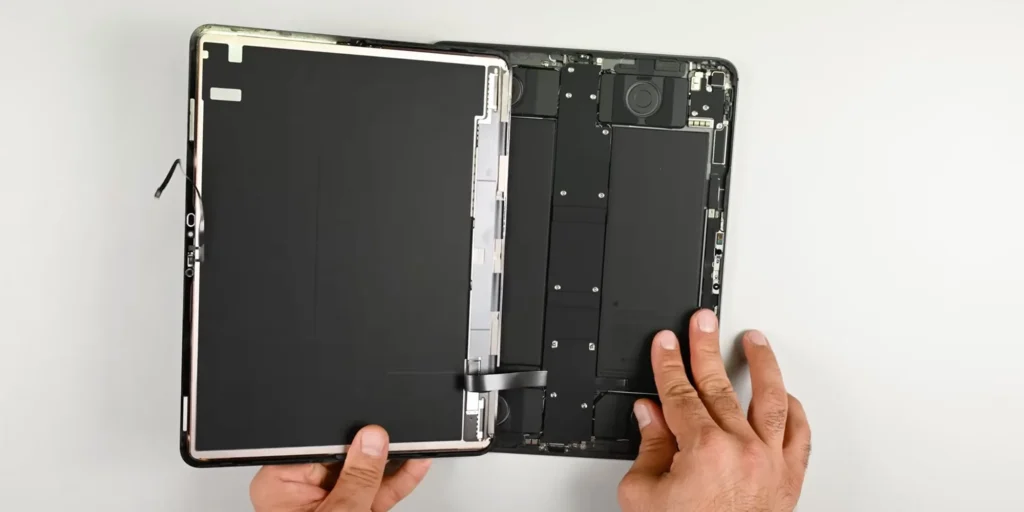iPad Pro M5: iFixit teardown reveals a repairability record (5/10)
Apple has once again made a strong impression with its new iPad Pro M5, touted as the thinnest, most powerful, and most advanced model ever designed. However, behind its ultra-slim design of 5.1 mm, iFixit experts sought to uncover what lies beneath—and, more importantly, whether Apple has truly made any significant strides toward better repairability.
The verdict? Notable improvements, but also ongoing limitations.
iPad Pro M5: An Engineering Marvel… Difficult to Open
Right from the start of the teardown, iFixit highlights the extreme thinness of the tablet: barely thicker than a USB-C port. It’s an aesthetic achievement but a nightmare for repair technicians. The interior is a densely packed masterpiece: the Apple M5 chip sits at the core, surrounded by precisely arranged cables, sensors, and thermal dissipators.
This compactness underscores Apple’s paradox: innovation at any cost, even if it makes repairs increasingly complex.
A Record Score, but Limited Repairability
Good news—iFixit has awarded the new iPad Pro M5 a score of 5/10—the highest ever received by an iPad.
Why?
- The battery is now more accessible, no longer requiring complete removal of the motherboard.
- The USB-C port is modular, allowing for independent replacement.
- The speakers and camera modules can be detached separately.
However, despite these advancements, the tablet remains very challenging to open: heating the screen is necessary to soften the adhesives, which involves handling delicate cables and requiring precision tools.
The outcome: repair is possible but restricted to experienced technicians or authorized service centers.
The Battery: A Mixed Progress
The battery removal process remains the most perilous step. It is glued underneath the screen, necessitating heating the chassis to avoid warping. iFixit notes that this method increases the risk of damaging the display—a mistake that could cost hundreds of euros.
Nonetheless, the fact that it’s more accessible than before suggests that Apple is starting to heed regulatory pressure concerning the right to repair.
Apple’s Dilemma: Security vs. Repair Freedom
Apple continues to utilize serialized components—electronically linked to each device.
This system prevents the use of third-party parts (batteries, cameras, ports, etc.) without official reprogramming.
While this enhances security and restricts counterfeiting, it hampers independent repairs. Consequently, users frequently find themselves compelled to go through official Apple channels, which are more expensive.
A Step Towards a More Sustainable Future
Experts view this iPad as a subtle yet real turning point. Apple appears to be initiating a shift toward a more modular design, driven by increasing legal pressures surrounding the Right to Repair in the United States and Europe.
The changes made—more accessible battery, independent modules—could lay the groundwork for a new generation of more responsible products.
The iPad Pro M5 is a marvel of engineering but still remains a technical fortress. While Apple is improving repairability without sacrificing its sleek design, the price of such thinness is that accessibility remains severely limited.
As iFixit summarizes: “Apple has opened a door, but it remains locked for most users.”
In any case, the teardown of the iPad Pro M5 marks a symbolic turning point—one in which an industry is compelled to rethink sustainability alongside performance.




